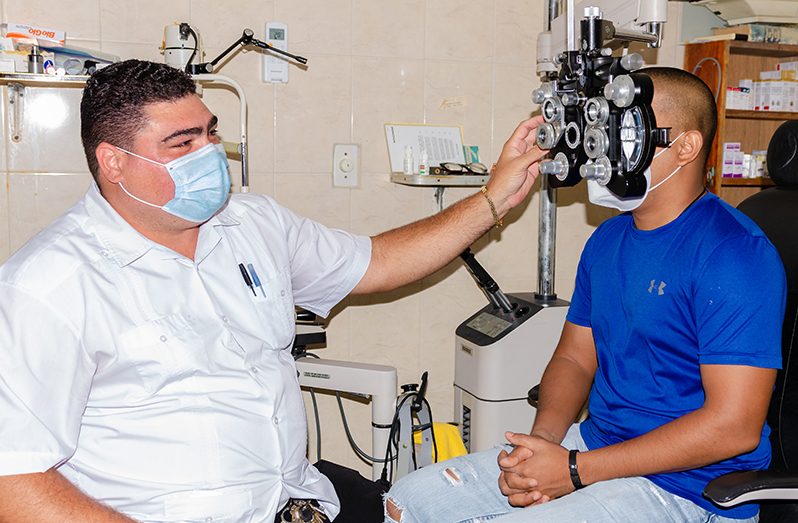– ‘Eye breaks’ should be part of virtual teaching delivery
VIRTUAL learning has become part of the ‘new normal’ brought about by the COVID-19 pandemic. While this has allowed learning to continue, despite the physical closure of schools, it has been accompanied by a myriad of challenges and digital eye strain is one of them.
“The excessive use of digital devices such as laptops, tablets, etc creates something called a digital strain which can cause persons to experience tiredness, runny eyes, fatigue and sometimes even headaches,” explained Optometrist and Manager of Modern Optical Service, Dr. Johan DaSilva in an interview with the Guyana Chronicle.

Further, he noted that the use of devices with small screens such as cellphones or some tablets, may exacerbate strain on the eyes. This is so because smaller screens require the user to hold it closer to the eyes which requires the eyes to work harder and may result in some level of discomfort, according to Dr. DaSilva.
In an article published in the Indian Journal of Ophthalmology, there is some evidence which illustrates that the progression of myopia (nearsightedness) may be exacerbated, particularly through the use of these smaller devices. But there are several measures which can be taken in order to help reduce this strain, many of which are simple and can be easily integrated into the virtual education delivery system.
Dr. DaSilva advised against using any of the electronic devices in poorly lit or completely dark rooms as this may cause discomfort to the eyes, and straining them to adjust to the bright light emanating from the screen. The brightness of the device’s screen should also be lowered and the fonts and images of what is being viewed on the screen should be enlarged as well.
For learners who are using phones and tablets, he highlighted that these devices should be placed about 16 or 18 inches away from the eyes, or at least an arm’s length away. Even so, however, viewing what is on the screen may be difficult and it is for this reason that enlarging the text and objects on the screen should be done.
‘EYE BREAKS’
Even with these precautions, however, one’s eyesight could still be affected with the prolonged use of digital devices. As such, it is important to take ‘eye breaks’ which would reduce the strain on the eyes for a short period of time. One long-accepted tool which helps the eyes to relax is the ‘20-20-20 rule.’
“With this, every 20 minutes, you look at something that is 20 feet away for 20 seconds,” Dr. DaSilva explained. Studies show that this may reduce the blurriness in vision which may occur because of prolonged exposure to digital screens. It also helps to reduce the strain from staring at a screen for a prolonged period.
Moreover, Dr. DaSilva emphasised that prolonged screen time should be limited. Instead of teaching for hours on a stretch before taking a break, from 09:00hrs to 12:00hrs for example, he advised that a five-minute break is given to learners at least after every hour of teaching.
The optometrist said that the relevant stakeholders should consider integrating these mandatory breaks into the system of virtual delivery in order to protect eye health and reduce prolonged exposure to digital screens.
In Guyana, the virtual mode of education delivery has been instituted for only a few months now. The local optometrist indicated that so far he has not seen an increase in the number of persons, and children in particular, coming for eye checkups because they experience discomfort or difficulties seeing as per normal.
“There is a possibility that it can happen,” he stressed, adding, “With this pandemic, we have no clue when it will stop and it is very important that you try to emphasise the importance of [taking care of the eyes] and you have to do and try to prevent what can happen.”
He also encouraged all parents and persons who are experiencing discomfort in their eyes or difficulties seeing to visit their local optometrist and get an eye test done.





.jpg)








